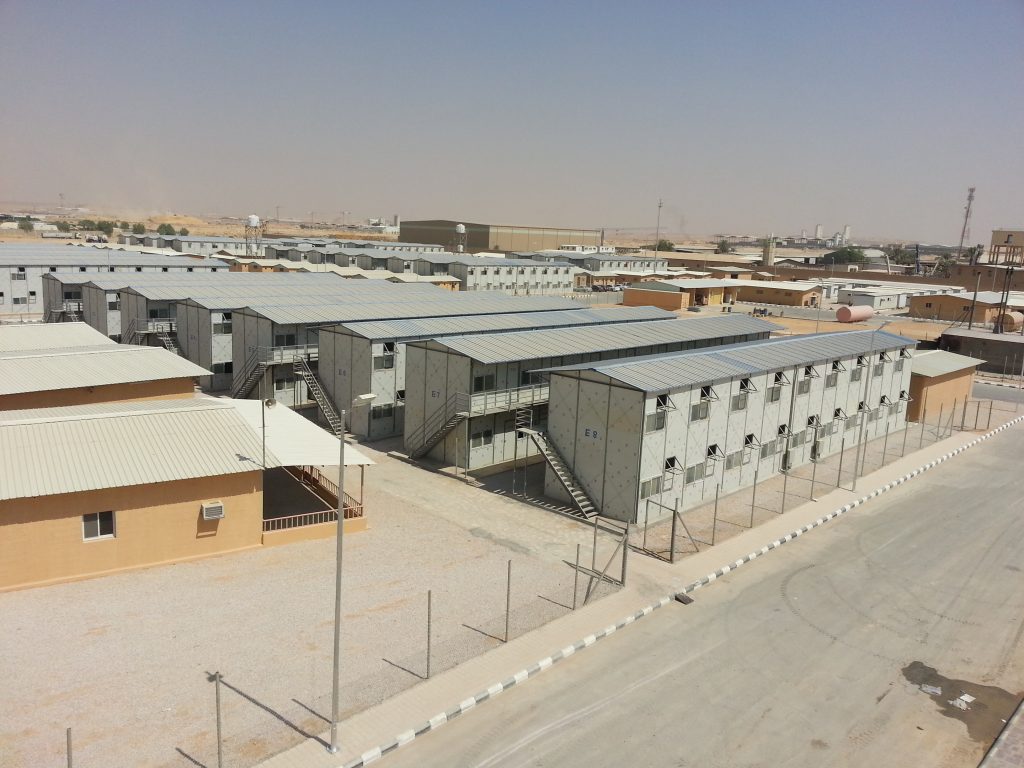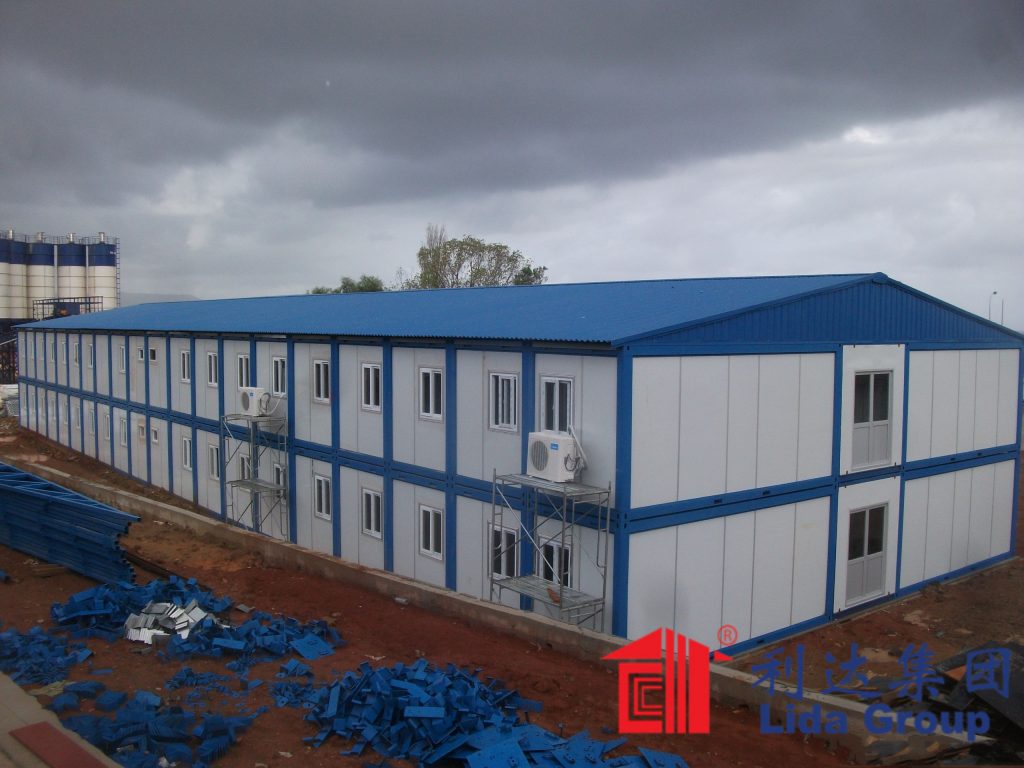In today’s fast-evolving world, the demand for flexible, scalable, and affordable building solutions has never been greater. From rapidly growing urban centers to remote rural communities, from disaster-stricken regions to expanding industrial zones, the need for quick, reliable, and cost-effective construction is universal. Traditional building methods—relying on bricks, concrete, and on-site labor—are often too slow, expensive, and resource-intensive to meet modern demands. As populations surge and economic pressures mount, governments, businesses, and individuals are seeking smarter alternatives.
One company that has risen to meet this challenge is Lida Group, a leading Chinese manufacturer specializing in prefabricated steel structures and modular building systems. At the forefront of their innovation is the low-cost sandwich panel house—a revolutionary solution that combines affordability, durability, and most importantly, ease of assembly. These structures are not just an alternative to traditional construction; they represent a new paradigm in how we think about building for the future.
This article explores how Lida Group’s sandwich panel houses are making cost-effective expansion simple and accessible across the globe. From their innovative design and rapid deployment to their economic and environmental benefits, we will examine why these modular homes are becoming the go-to choice for governments, NGOs, developers, and individuals alike.
The Need for Rapid and Affordable Construction
The world is undergoing unprecedented demographic and economic shifts. According to the United Nations, the global population is expected to reach 9.7 billion by 2050, with most of the growth occurring in developing countries. Urban populations are expanding at a rate of 1.6% per year, adding roughly 60 million new city dwellers annually. This explosive growth places immense pressure on housing, healthcare, education, and infrastructure.
At the same time, climate change and natural disasters are displacing millions. Floods, earthquakes, hurricanes, and wildfires have destroyed homes and communities, creating urgent needs for temporary and permanent shelter. In conflict zones, refugee camps often evolve into long-term settlements, requiring durable and dignified housing.
Yet, traditional construction methods are ill-equipped to respond at the necessary speed and scale. Building a standard home can take months or even years, involving multiple trades, extensive labor, and high material costs. Delays due to weather, supply chain issues, or labor shortages are common. Moreover, the environmental footprint of conventional construction—high carbon emissions, waste generation, and energy consumption—is increasingly unsustainable.
There is a clear and growing need for building solutions that are:
– **Fast to deploy**
– **Low in cost**
– **Easy to assemble**
– **Durable and safe**
– **Environmentally responsible**
Lida Group’s sandwich panel houses meet all these criteria, offering a practical and scalable answer to the world’s construction challenges.
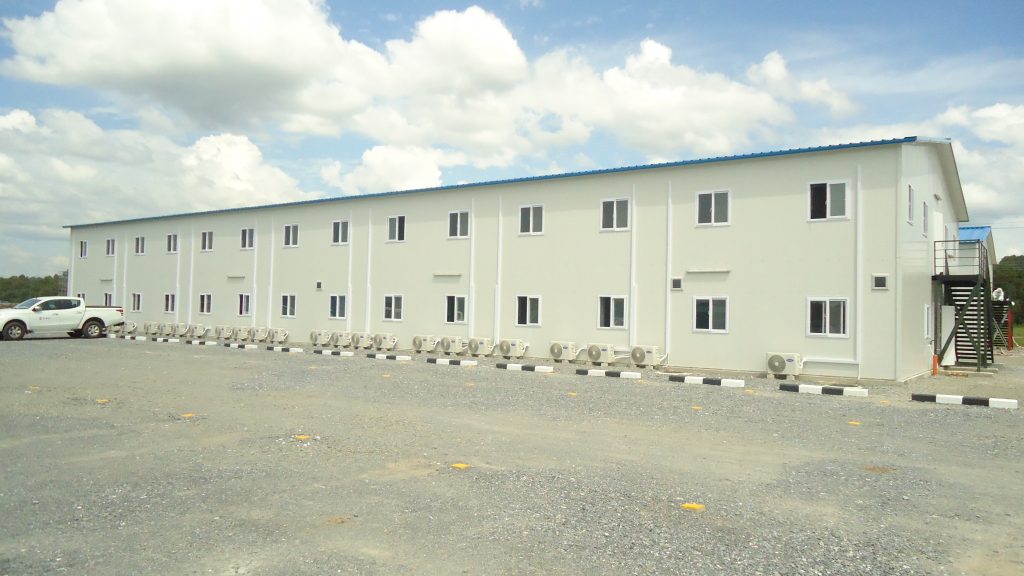
What Are Sandwich Panel Houses?
Sandwich panel houses are a type of prefabricated building constructed using composite panels that consist of three layers: two outer skins (typically made of steel or aluminum) bonded to a rigid insulating core (such as polyurethane, rock wool, or polystyrene). This layered structure—resembling a sandwich—gives the panels their name and their unique performance characteristics.
The outer metal layers provide structural strength, weather resistance, and durability. The inner core delivers excellent thermal insulation, soundproofing, and fire resistance, depending on the material used. These panels are manufactured in controlled factory environments, ensuring high quality, consistency, and precision.
Lida Group offers several types of sandwich panels tailored to different climates and applications:
– **PU (Polyurethane) Panels**: Lightweight with high thermal insulation, ideal for cold or temperate climates.
– **EPS (Expanded Polystyrene) Panels**: Economical and widely used for general-purpose buildings.
– **Rock Wool Panels**: Highly fire-resistant and suitable for high-safety environments such as hospitals or industrial sites.
– **PIR (Polyisocyanurate) Panels**: Superior insulation and moisture resistance, often used in commercial or high-performance buildings.
These panels are used to construct walls, roofs, and floors, forming complete modular units that can be quickly assembled on-site.
The Assembly Process: Simplicity at Its Core
What truly sets Lida Group’s sandwich panel houses apart is their ease of assembly. Unlike traditional construction, which requires skilled labor, wet trades, and weeks of work, these homes can be built by a small team with minimal training in just a few days.
The assembly process is straightforward and efficient:
1. **Site Preparation**: A level foundation is prepared, which can be a simple concrete slab, screw piles, or even a compacted gravel base, depending on the terrain and building size.
2. **Steel Frame Erection**: A lightweight but robust steel frame is assembled first. This frame provides structural support and ensures stability, even in seismic or high-wind zones.
3. **Panel Installation**: Pre-fabricated sandwich panels are slotted into the frame and secured with bolts or interlocking connectors. No welding, cutting, or masonry is required.
4. **Roof and Finishing**: Roof panels are installed, followed by gutters, windows, doors, and any interior fixtures.
5. **Utility Connection**: Electrical wiring, plumbing, and HVAC systems—often pre-installed in the panels—are connected on-site.
A typical 50-square-meter (540 sq ft) house can be fully assembled in **48 to 72 hours** by a team of four to six workers. Larger buildings, such as schools or clinics, can be constructed in under two weeks.
This speed is revolutionary. In emergency situations, such as after an earthquake or flood, Lida Group has deployed hundreds of shelters within days, providing immediate protection and dignity to displaced families.
Why “Easy to Assemble” Matters
The simplicity of assembly is not just a convenience—it is a game-changer. It transforms who can build, where they can build, and how quickly they can respond to urgent needs.
#### 1. **Reduced Labor Requirements**
Traditional construction requires masons, carpenters, electricians, plumbers, and other skilled trades. In contrast, sandwich panel houses can be assembled by general laborers with basic training. This reduces labor costs and makes construction feasible in remote or underdeveloped areas where skilled workers are scarce.
#### 2. **No Need for Heavy Machinery**
The lightweight nature of the panels means that cranes or heavy equipment are often unnecessary. Panels can be carried and positioned by hand, making the process accessible even in rugged or inaccessible terrain.
#### 3. **Minimal On-Site Disruption**
Since most of the work is done in the factory, on-site construction generates little noise, dust, or waste. This is especially important in urban areas or sensitive environments.
#### 4. **Scalability and Flexibility**
Because the system is modular, buildings can be easily expanded. Need an extra room? Simply add another panel module. Want to convert a single home into a multi-family unit? The design allows for seamless integration. This scalability makes sandwich panel houses ideal for growing families, expanding businesses, or evolving community needs.
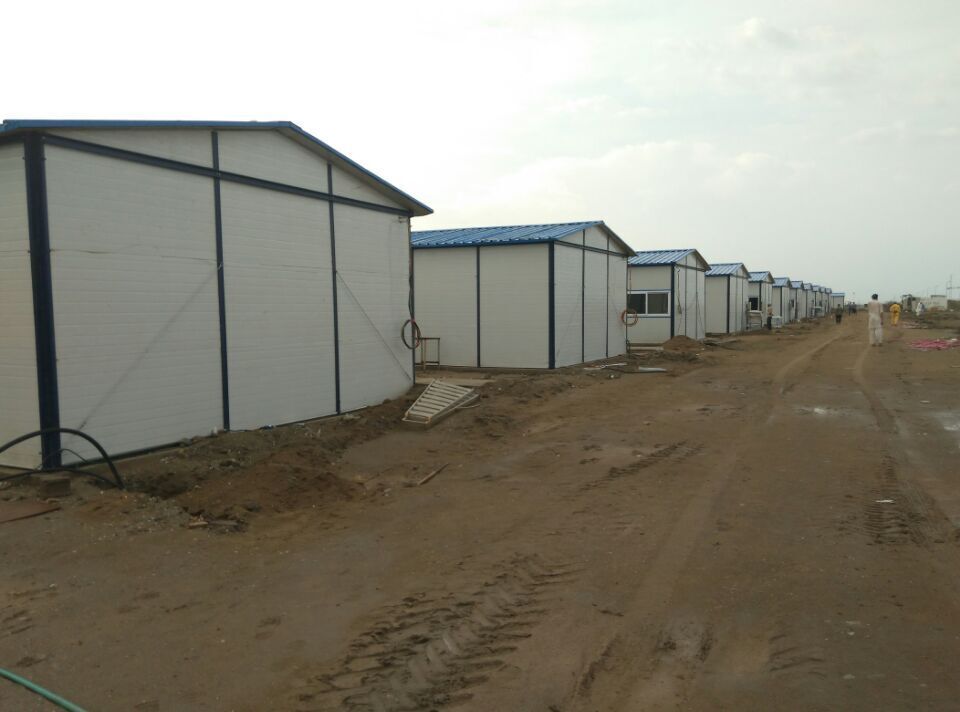
Cost-Effectiveness: Building More for Less
Affordability is a cornerstone of Lida Group’s mission. Their sandwich panel houses are designed to be low-cost without sacrificing quality, safety, or comfort.
The cost savings come from multiple sources:
– **Factory Efficiency**: Mass production in a controlled environment reduces material waste and labor costs.
– **Reduced On-Site Time**: Faster assembly means fewer worker days and lower wages.
– **Lower Transportation Costs**: Panels are lightweight and stackable, allowing more units per shipment.
– **Minimal Foundation Requirements**: The lightweight structure often requires only a simple foundation, saving time and materials.
– **No Wet Trades**: Eliminating bricklaying, plastering, and curing reduces both time and labor expenses.
A standard 60m² sandwich panel house from Lida Group typically costs between **$12,000 and $18,000**, depending on specifications and location. This is significantly lower than the cost of a comparable brick-and-mortar home in most developing countries.
For governments and NGOs, this cost efficiency enables large-scale housing projects that would otherwise be unaffordable. For individuals and families, it makes homeownership a realistic goal.
Durability and Safety: Built to Last
Despite their lightweight construction, sandwich panel houses are engineered for strength and longevity. Lida Group’s structures are designed to withstand harsh environmental conditions, including:
– **High Winds**: Tested to withstand wind speeds of up to 120 km/h.
– **Heavy Snow Loads**: Suitable for cold climates with snow accumulation.
– **Seismic Activity**: Flexible steel frames absorb earthquake shocks, reducing the risk of collapse.
– **Fire Resistance**: Rock wool core panels can resist fire for up to 4 hours, meeting international safety standards.
The steel frames are galvanized and coated to prevent rust, ensuring a lifespan of 25–30 years or more with minimal maintenance. The sandwich panels themselves are resistant to moisture, mold, and pests—common issues in tropical and humid regions.
In real-world applications, these homes have proven their resilience. After the 2023 earthquake in Turkey, Lida Group’s modular shelters remained intact while many traditional buildings collapsed. In flood-prone areas of Bangladesh, elevated sandwich panel homes have protected families during monsoon seasons.
Energy Efficiency and Environmental Benefits
Beyond cost and speed, Lida Group’s houses offer significant environmental advantages.
The insulating core of the sandwich panels minimizes heat transfer, keeping interiors warm in winter and cool in summer. This reduces the need for heating and cooling, leading to lower energy consumption and utility bills.
For example, a 100mm PU panel can achieve a U-value as low as **0.25 W/m²K**, far exceeding the insulation performance of traditional brick walls. In field tests, homeowners reported energy savings of up to **70%** compared to conventional homes.
Additional eco-friendly features include:
– **Solar-Ready Roofs**: Designed to accommodate photovoltaic panels for renewable energy.
– **Recyclable Materials**: Steel and aluminum are 100% recyclable.
– **Low Waste Production**: Factory precision reduces material waste to under 5%.
– **Reduced Carbon Footprint**: Less transportation, energy use, and on-site disruption.
By promoting energy-efficient, low-impact construction, Lida Group is helping to combat climate change and build a more sustainable future.
Real-World Applications: Where Simplicity Meets Impact
Lida Group’s sandwich panel houses are not just theoretical—they are being used around the world to solve real problems.
#### 1. **Disaster Relief and Emergency Shelters**
After natural disasters, time is critical. Lida Group has delivered thousands of temporary shelters to earthquake zones in Nepal, flood areas in Pakistan, and hurricane-affected regions in the Caribbean. These homes provide immediate safety, privacy, and dignity to displaced families.
#### 2. **Affordable Housing for Low-Income Families**
In countries like Kenya, Uganda, and the Philippines, Lida Group has partnered with local governments and NGOs to build affordable housing complexes. These projects offer modern amenities at a fraction of the cost of traditional construction, improving living standards and reducing urban slums.
#### 3. **Remote and Rural Development**
In mountainous regions of Peru and rural villages in Indonesia, access to building materials is limited. Lida’s flat-packed panels can be transported by truck or even helicopter and assembled by local communities with minimal training. These homes serve as schools, clinics, and community centers, bridging the gap in essential services.
#### 4. **Urban Infill and Temporary Accommodation**
In cities like Ho Chi Minh City and Mumbai, land is scarce and expensive. Lida’s modular units are used for worker housing, student dormitories, and pop-up medical clinics. Their compact design and quick deployment make them ideal for underutilized spaces.
#### 5. **Commercial and Industrial Use**
Beyond housing, sandwich panel buildings are used for warehouses, offices, retail spaces, and agricultural facilities. Their durability and low maintenance make them ideal for industrial applications.
Customization and Aesthetic Flexibility
A common misconception is that prefabricated homes are uniform or unattractive. Lida Group challenges this with a wide range of customization options.
Customers can choose from:
– **Panel colors and finishes** (e.g., wood grain, stone texture)
– **Window and door styles**
– **Roof designs** (gable, flat, or sloped)
– **Interior layouts** (1 to 3 bedrooms, open-plan, etc.)
The modular design allows for creative configurations—single units, duplexes, or entire housing complexes. Exteriors can be designed to blend with local architecture, ensuring cultural and aesthetic harmony.
Technological Integration: Smart and Future-Ready
Lida Group is integrating smart technologies into its housing systems. Newer models feature:
– **Pre-wired electrical systems** for lighting, internet, and security
– **Energy monitoring sensors**
– **Smart thermostats and climate control**
– **Solar panel compatibility**
These features make the homes not only affordable and efficient but also modern and connected—ideal for today’s digital world.
Overcoming Challenges and Misconceptions
Despite their many advantages, sandwich panel houses face some challenges:
– **Regulatory Barriers**: Some countries have building codes that favor traditional construction.
– **Public Perception**: Prefab homes are sometimes seen as “temporary” or “low-quality.”
– **Financing**: Banks may be hesitant to lend for non-traditional housing.
Lida Group addresses these issues through education, pilot projects, and partnerships with governments and international organizations. Demonstrating the long-term durability and value of their homes helps change perceptions and build trust.
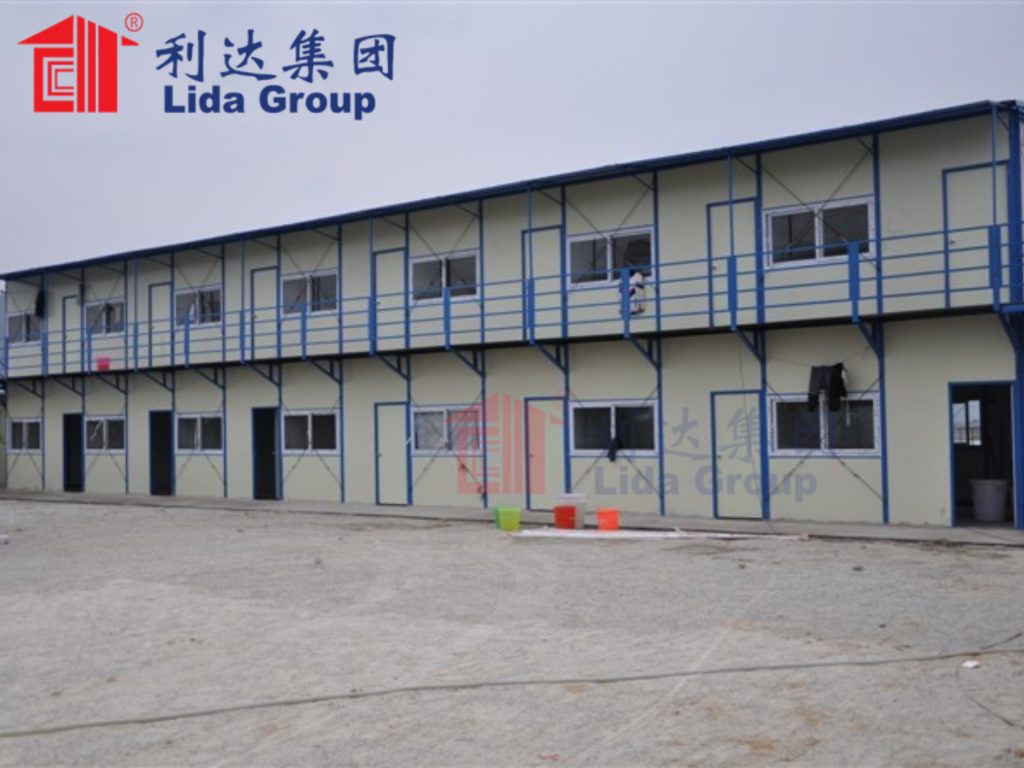
The Role of Policy and Global Partnerships
For sandwich panel housing to scale globally, supportive policies are essential. Governments can:
– Update building codes to include modular standards.
– Offer subsidies for energy-efficient homes.
– Procure prefabricated buildings for public infrastructure.
– Invest in workforce training.
Lida Group collaborates with the UN, World Bank, and regional development agencies to promote sustainable construction and expand access to affordable housing.
### Case Study: The “QuickBuild” Project in Rwanda
In 2023, the Rwandan government launched the “QuickBuild” initiative to address a housing shortage for civil servants and teachers. Partnering with Lida Group, they constructed a 300-unit housing complex in Kigali using sandwich panel technology.
Key outcomes:
– **Construction Time**: 75 days for the entire project.
– **Cost**: $14,000 per unit (35% below market rate).
– **Energy Use**: 60% reduction in heating/cooling costs.
– **Local Employment**: 150 workers trained and hired.
– **Community Feedback**: 95% of residents reported high satisfaction.
The project’s success has inspired similar initiatives in neighboring countries.
### The Future of Construction: Simplicity, Speed, and Sustainability
As the world faces growing housing, environmental, and economic challenges, the need for innovative construction solutions has never been greater. Lida Group’s sandwich panel houses exemplify how simplicity, affordability, and ease of assembly can come together to create meaningful impact.
They are not just buildings—they are tools for empowerment, resilience, and progress. Whether providing shelter after a disaster, enabling rural development, or supporting urban growth, these homes are changing lives.
The future of construction is not about bigger cranes or taller buildings—it’s about smarter design, faster deployment, and greater accessibility. And with companies like Lida Group leading the way, that future is already here.
Conclusion: Building the Future, One Panel at a Time
Lida Group’s low-cost sandwich panel houses are more than a construction innovation—they are a solution to some of the world’s most pressing challenges. By making cost-effective expansion simple and accessible, they are redefining what is possible in housing and infrastructure.
Their key strengths—**ease of assembly, affordability, durability, energy efficiency, and scalability**—make them ideal for a wide range of applications, from emergency relief to permanent communities. The ability to build quickly, with minimal resources and labor, empowers governments, organizations, and individuals to respond to needs with unprecedented speed and efficiency.
Moreover, these homes are not temporary fixes but long-term investments in sustainability and quality of life. They reduce environmental impact, lower energy costs, and improve living conditions for millions.
As urbanization accelerates and climate pressures grow, the construction industry must evolve. Lida Group has shown us the way forward: with intelligent design, modular systems, and a commitment to human-centered solutions.
In a world where time, money, and resources are often in short supply, the simplicity and effectiveness of sandwich panel houses offer a beacon of hope. They prove that building a better future doesn’t have to be complicated—it just has to be smart.
And with Lida Group leading the charge, the future of construction is not only simpler—it is brighter, more inclusive, and more sustainable for all.

Related news
-
Building for the Future: Lida Group's Low-Cost Sandwich Panel Houses Combine Energy Efficiency with Easy-Assemble Design
2025-09-25 09:52:13
-
Lida Group Sets a New Standard for Speed with Its Easy-Assemble Prefab Mobile Houses Using Sandwich Panels
2025-09-25 09:59:15
-
Lida Group's Innovative Easy-Assemble Building Technology Simplifies Construction of Durable Low-Cost Sandwich Panel Homes
2025-09-25 09:46:54
contact us
- Tel: +86-532-88966982
- Whatsapp: +86-13793209022
- E-mail: sales@lidajituan.com


